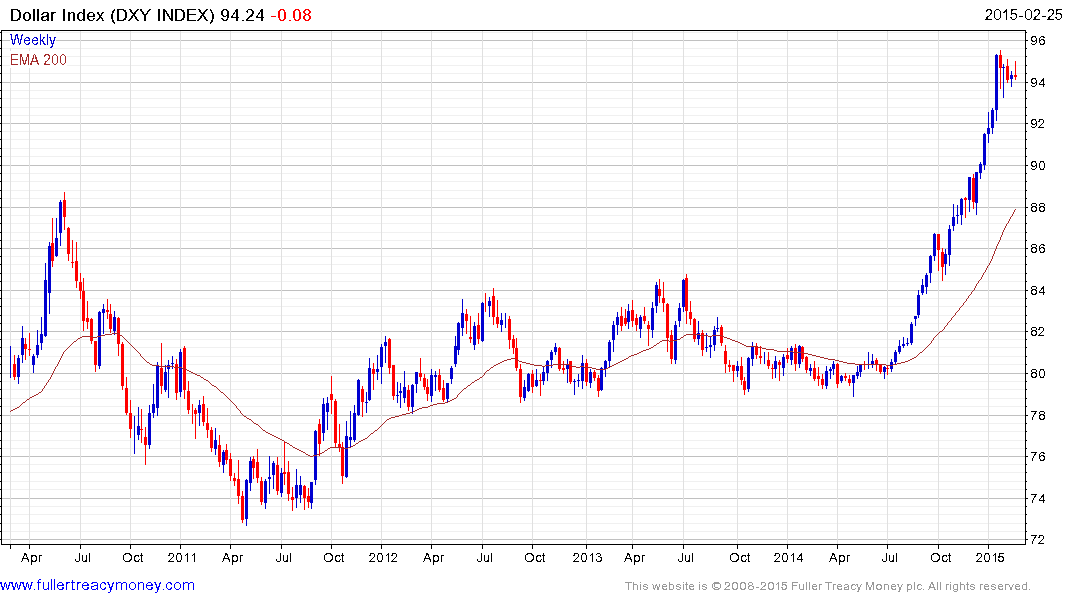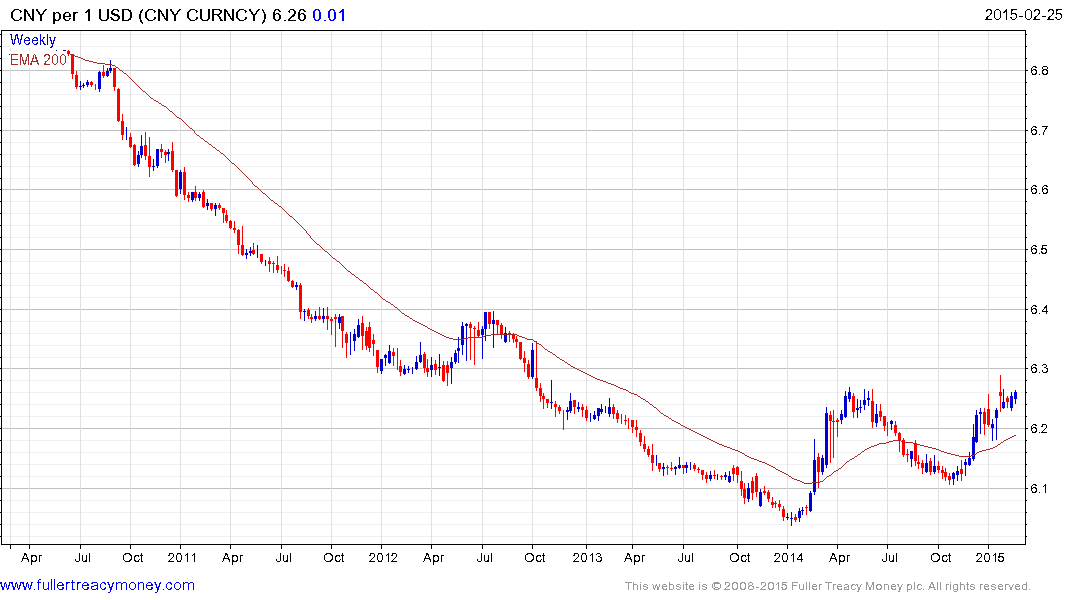Musings from the Oil Patch February 24th 2015
Thanks to a subscriber for this edition of Allen Brooks’ ever interesting report for PPHB. Here is a section on currency wars:
A contributing factor for the weak economic activity in recent years has been countries holding the line on their currencies. That attitude may be changing, which could be good news for energy demand as currency devaluations are designed to pump up economies. According to a study written by economic historian Barry Eichengreen of the University of California, Berkeley, the countries that were the first to engage in monetary easing, in this case the break with the gold standard, recovered the fastest. In 1931, it was Britain that broke from the gold standard first and the first nation to recover. Today, we are relearning this history.
Since the U.S. was the first country to engage in massive monetary easing in 2008, our economy was the first to recover. As counted by investment bank Evercore ISI, there have been some 514 monetary easing moves by central banks over the past three years. According to Morgan Stanley’s (MS-NYSE) global strategists, there are now 12 central banks around the globe that have recently moved to ease their monetary policies. As this was happening, U.S. monetary authorities are discussing increasing interest rates and in effect becoming the recipient of deflationary pressures driven out by those countries easing their monetary policies. Because China has tied its currency to that of the United States, it will also receive deflation.
The prospect of raising interest rates in the U.S. has led to a strengthening of the dollar, which has been a contributing factor to the fall in oil prices and other commodity prices. As pointed out by the Morgan Stanley analysts, not everyone can be a winner in the currency wars. Therefore, there will be one or more losers, with the U.S. and China on the short end of the stick right now. Given the recent weakening statistics in retail sales, home building and now certain regional manufacturing data in the U.S., one wonders whether the Federal Reserve will not hike interest rates this year as broadly expected. We are also seeing moves by the Chinese government to ease its monetary policy to help bolster its local and regional governments and their banks to offset the flow of currency out of the country. Being tied to the U.S. dollar, the renmimbi has had an upward bias as the dollar has strengthened. That trend induced Chinese companies to borrow outside of the country expecting to be able to pay off the loans with cheaper local currency. Now, the renmimbi continues to weaken within a very tight band in response to the currency outflows. China monetary authorities struggle with whether to weaken its currency and stimulate economic growth, but that move runs the risk of leading to an increase in corporate bankruptcies. Is it possible that we could soon see every country engaged in monetary easing trying to promote its own economic self-interest? What would that mean for future energy demand and oil prices?
Here is a link to the full report.
Japan’s decision to embark on broad based monetary easing in order to kick start inflation in its economy was the catalyst for the competitive devaluation we now see just about everywhere. Various international currency agreements such as Bretton Woods I and II or the Plaza Accord eventually run their course and a rebalancing occurs as one country or another seeks an advantage. Eventually the process is taken to extremes, which creates the conditions necessary to encourage governments to agree to support multilateral intervention. We are still a long way from such a move.
.png)
The Dollar had been falling for so long that investors were tempted to believe that would always be the case. Its rally over the last six months has shaken that complacency. While the greenback is overbought in the short-term and there is potential for some consolidation and/or mean reversion, the medium-term outlook continues to remain positive.

This chart of the Dollar Index highlights just how overbought the Dollar is in the short-term.

It is open to question as to what extent the Chinese economy can tolerate the continued strength of the Renminbi as it transitions from a capital intensive phase of development to one centred on supporting consumerism and the services sector. The Dollar posted its first higher reaction low in almost 20 years from November suggesting the CNY6 area represents about as strong as the Renminbi is going to get. In the event that the reorganisation of the economy does not go according to plan the potential for a Chinese devaluation cannot be ruled out.
Back to top


